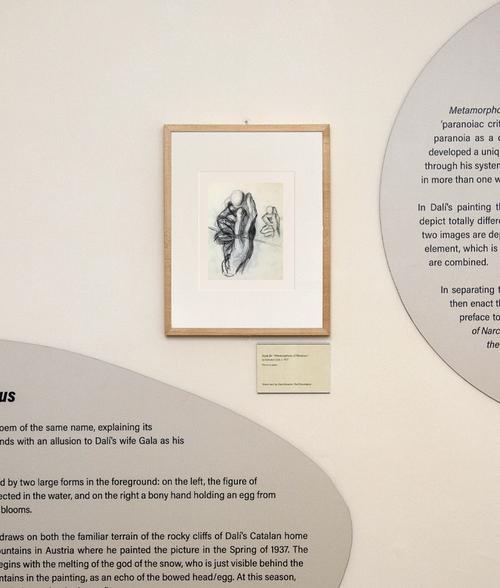
Metamorphosis of Narcissus - the Drawings
Metamorphosis of Narcissus is an unusual and complex example of Dalí’s ‘paranoiac critical activity’, which he derived from a psychological concept of paranoia as a delusional but systematic mis-reading of the external world. Dalí developed a unique method of visualising such a ‘paranoiac’ interpretation of the world through his system of double images, in which a single visual configuration can be read in more than one way.
In Dalí’s painting the two dominant images have identical contours and structure but depict totally different objects. In the preliminary drawings for the painting, however, the two images are depicted as a single motif. The head/egg, the hand/body, and the central element, which is at once the knee and the thumb with a troubling crackdown the nail, are combined.
In separating the two images for the painting, Dalí hoped that the viewer could then enact the metamorphosis of the myth by re-uniting them optically. In the preface to his poem, he wrote: “If one looks for some time at the figure of Narcissus, it gradually disappears and is suddenly transformed into the image of a hand which rises out of his own reflection…”